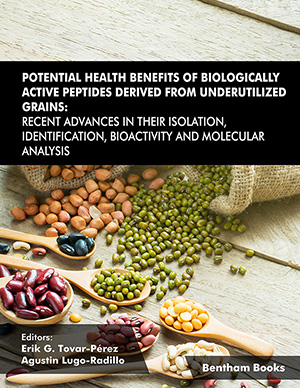Abstract
The broad bean progenitor was a local wild vegetation, which was discovered in a prehistoric Natufian culture site. It is in symbiosis with Rhizobium leguminosarum for nitrogen fixation. It has a large genetic diversity and belongs to the third largest family of angiosperms, with over 16,000-19,000 species. Commonly, the genotypes are V. faba var. major, minor, equina and paucijuga. Some of its applications, for example, are as pills for Parkinson´s disease or hypertensive patients due to its L-Dopa, and high potassium and low sodium contents, respectively. Likewise, bread, biscuits, pasta, emulsions and beverages can be fortified with broadbean flour, improving the protein content. The majority of proteins contained in the broad bean are globulins (80%), followed by albumins (20%), and, in a lesser amount, glutelins (15%) and prolamins (6%). Globulins are composed of legumin and vicilin/convicilin. Broad bean is a cheap and healthy source of protein. Therefore, it can produce biologically active peptides; for example, NPN-1 can decrease muscle wasting; protein hydrolysates are hypocholesterolemic; VFTI-G1 is anticarcinogenic (IC50=30μM); moreover, a protease inhibitor isolated from a broad bean, is useful in the treatment of fungal disease in HIV-infected patients (51.2% inhibition at 32 μM). In addition, fraction F1 has antityrosinase activity IC50=0.140; and fabatins have moderate activity against E. coli, E. Hirae and P. aeruginosa. The future of product developments in food and pharmacology lies in a combination of breakthroughs in genetics, physiology of the gut, hydrolysis, extrusion and purification of BAPs.
Keywords: Anticancer, Antioxidant activity, Antityrosinase activity, Bioactive peptides, Broad bean, Enhance protein, Genes, Genotypes, Globulins, Grain legumes, Hydrolysates, Parkinson’s disease, Peptides, Sequence amino acid, Storage proteins, Vicia faba.






















